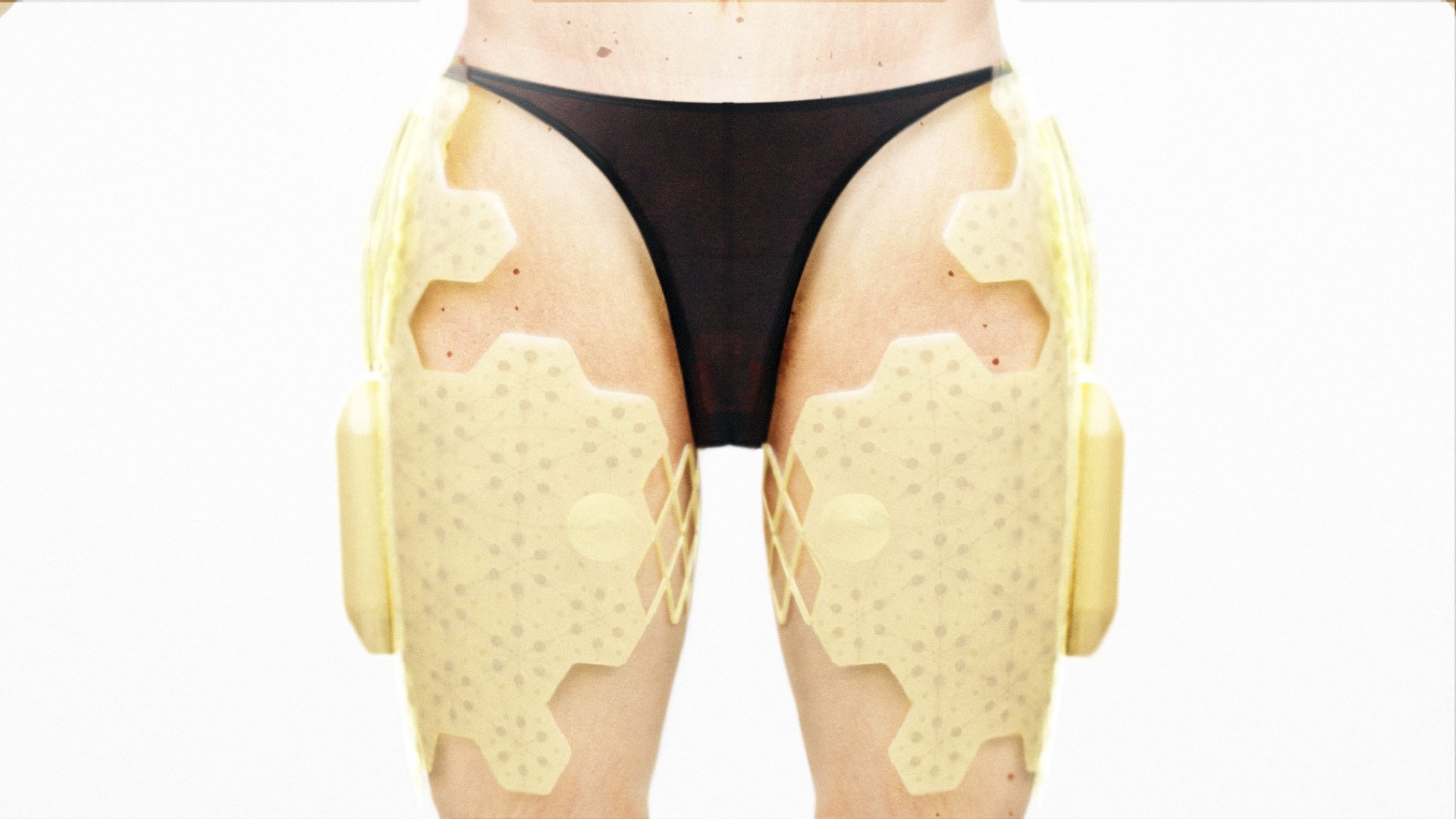
Zephyr
What if exoskeletons could adapt to the necessities of our bodies?
Across centuries, we as humans developed many ways to keep ourselves working to move and walk around the planet, independently of the difficulties that our bodies showed us, like using a wood stick as a crutch or heavy metallic robot legs. All these inventions represent a part of the human evolution of medicine and biomechanics, but what if these systems could be improved in a way to understand our body and respond autonomously to our needs?
Two of the big motives that make people disabled to move properly are muscle imbalances and neuro-motor disabilities that appear with age. The Zephyr project aims to replicate the branch system found in trees to solve the muscle imbalance, creating a soft and regulating branch system that creates pressure, stabilizes the body, and reactive muscles reactions through specialized freeze-dried bacteria that can produce electricity to pump up against our skin.
To measure and understand the patient's body, each one of these parts contains a specific number of EMG sensors that map and estipulate the fat inside them, with the objective of communicating to those pairs in a separate digital system and then creating a second layer correspondent to the artificial muscles that are going to be activated when it needed in parts that truly need support to sustain the body.
Furthermore, to inflate each artificial muscle in the cells, the composed parts contain an air compartment in the form of a star, that acts like an artificial lung to pump the air inside and outside the cells, without compromising more space due to the format that prioritizes a horizontal utilization that is attached to a flexible pin that connects the air channel to the computer.
Technological anatomy
To create stability, the Zephyr project aims to replicate the branch system found in trees to solve the muscle imbalance found in patients. The idea is to implement a soft and independent branch system that can implement different pressures with air through the patient's muscles to stabilize and sustain the body. In other words, it will distribute force like a tree with different controllable root sizes that will inflate to embody and balance areas that need support.
Despite these specifications, what makes the system truly efficient is the composition of the single cells, containing six artificial muscles inside, in forms that are adapted to mold the shape of specific parts of the body that are intrinsically related to the movement and muscle action in our daily activities. These forms are designed to embrace the patient's body parts (thigh, calf, and back) to create intensity by targeting the epicenter of each one of them when is activated.
Each one of the modules contains two principal elements that help to manage the airflow in the internal layer that has direct contact with the skin. The first is related to big heat actuators that regulate the deformity level of the hydrogel that makes pressure, and the second to smaller units that manage the gates to control the roots growth simulation across the device.
Understanding and solving the necessities by activating artificial muscles, the second and last anatomical problem to solve and rehabilitate elders to walk properly is to give electrical impulses through the skin with the aim to reactivate some parts of the nervous system that unfortunately no longer have strong connections. To solve this specific problem a layer containing freeze-dried Geobacterias is placed around the modules to produce electricity through the sweat produced by the patient skin.
Geobacters are a specific kind of bacteria that can survive in extreme environmental conditions like inhospitable places around the world and produce energy with humidity, which feeds and keep it alive. To control and conduct electricity, the bacterial layer was placed in a layer below the hydrogel that can redirect electricity produced by the bacteria through the skin, and two layers below one type that doesn't conduct electrical charge. A specific layout to certify that muscles receive electricity only when artificial muscles got activated.
Human interaction
The computer located around the parts of the body contains a specific group of electronic components specifically to measure muscle activity and regulate the air flows moving through the system, in and out. But each one of these devices that is placed on the body is nothing without a connection through a digital interface that gathers all the information together to create maps related to the distribution of inflation in the specific modules with the artificial muscles inside.
To gather all the information together in a didactic manner, the user will have to use a digital interface that can be easily manipulated to modify the parameters between the devices and manage the connections that are established between them. This way, users can possibly choose what they feel better in their body, even with the intelligence behind the device suggesting improvements to them.







